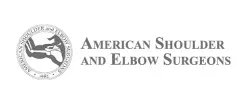The retrospective study of 384 anatomic total shoulder arthroplasties (aTSAs) over a 10-year period found a gradual loss of range of motion (ROM) in all planes except forward elevation, with minimal impact on patient-reported outcome measures, and compared to a similar cohort of reverse shoulder arthroplasties (RSAs), overhead ROM decreased at a slower rate in the aTSA group, challenging the belief that RSA-induced deltoid fatigue leads to long-term loss of overhead motion.
Background: Gradual loss of overhead range of motion (ROM) has been observed after reverse shoulder arthroplasty (RSA). It remains unclear if this is caused by the effect of RSA design on muscle fiber lengthening or is part of the natural aging process of the shoulder musculature. Although studies have attempted to evaluate deltoid fatigue after RSA, there is a paucity of literature evaluating this effect after anatomic shoulder arthroplasty (aTSA), which would be expected to occur due to aging alone. The purpose of this study is to evaluate the effect of time on overhead ROM after aTSA and compare this with previous data on a similar cohort of RSAs. We hypothesized that overhead ROM would decrease gradually over time in both groups without differences between prosthesis types.
Methods: A retrospective review of 384 aTSAs without complications was performed over a 10-year period. All shoulders were treated for primary osteoarthritis using a single implant system. Patients were evaluated longitudinally at multiple postoperative time points. At least 1 follow-up visit was between 1 and 2 years postoperatively and another at least 5 years after surgery. ROM and patient reported outcome measures (PROMs) were evaluated using linear-mixed models for repeated measures. These results were compared with a previously evaluated cohort of 165 well-functioning RSAs analyzed using the same methodology.
Results: Primary aTSA shoulders were observed to lose 0.7° of abduction per year starting 1 year postoperatively (P = .001). Smaller losses were observed in external rotation (-0.3°/yr, P = .06) and internal rotation (-0.04/yr, P < .001). However, no significant losses were observed in forward elevation (P = .8). All PROMs diminished slowly over time, but these changes did not exceed the minimally clinically important difference when modeled over 10 years (Simple Shoulder Test -0.08/yr, P < .001; American Shoulder Elbow Surgeons -0.5/yr, P < .001; University of California Los Angeles Shoulder Score -0.2/yr, P < .001). When compared with a similarly analyzed cohort of RSAs, overhead ROM decreased at a slower rate in the aTSA cohort (abduction -0.7° vs. -0.8°/yr, P = .9; FE -0.06° vs. -0.8°/yr, P = .05).
Discussion: In the well-functioning aTSA, gradual loss of ROM occurs in all planes of motion except forward elevation. However, these losses are small and have little meaningful impact relative to minimally clinically important difference thresholds on PROMs. Progressive loss of abduction seen in both aTSA and RSA is likely secondary to aging of the periscapular and rotator cuff musculature. When compared with RSA, loss of motion after aTSA was statistically similar, calling into question the belief that RSA-induced deltoid fatigue leads to loss of overhead motion over time.
Learn more about our shoulder surgery options, here.
Listen to what past patients are saying, here.














